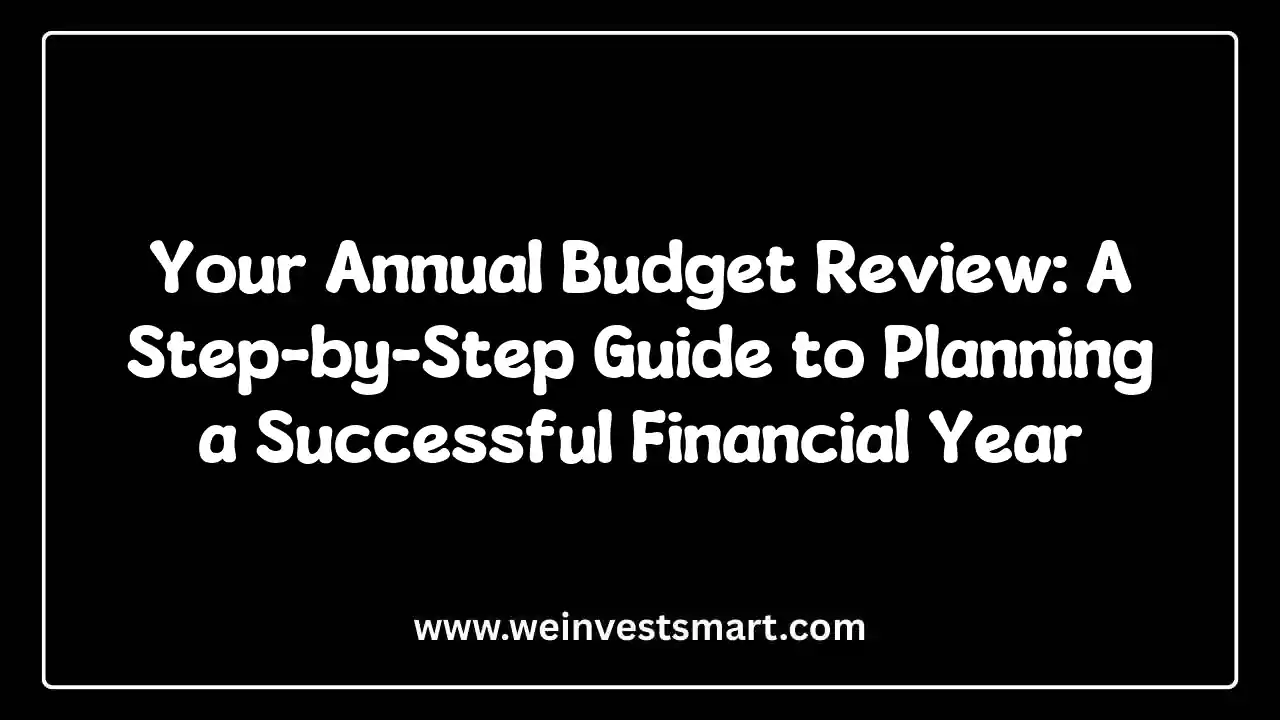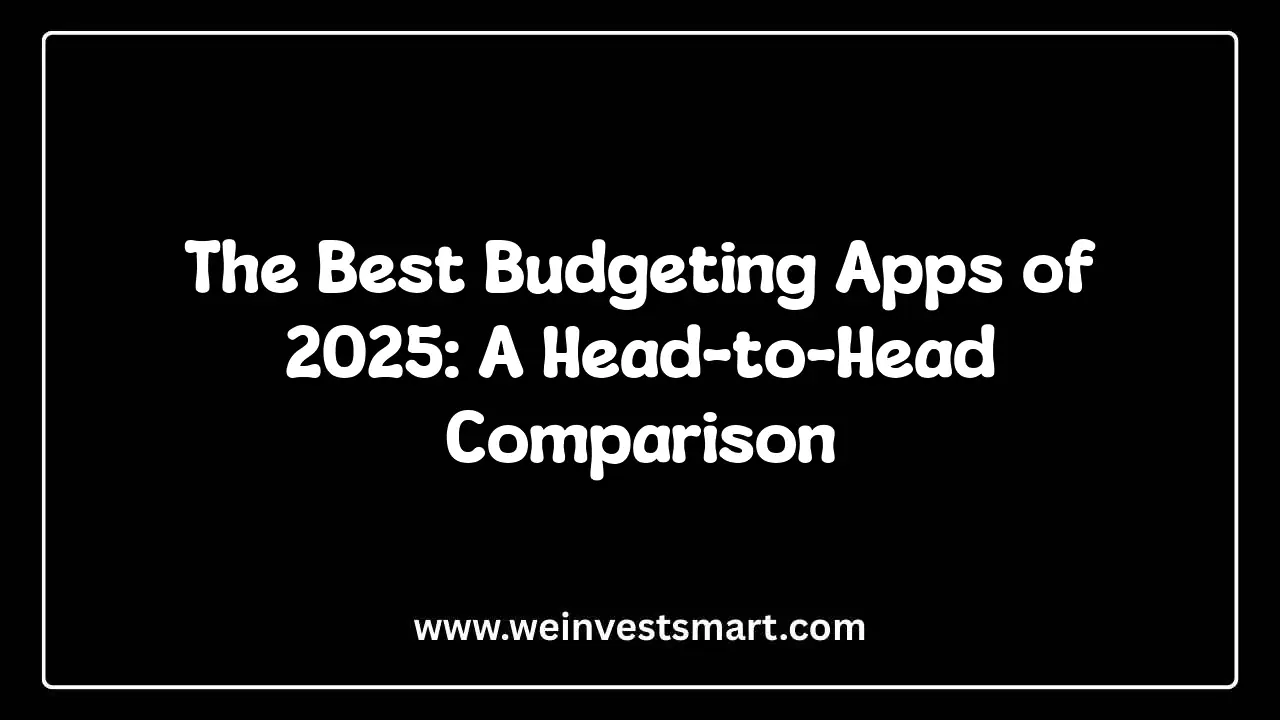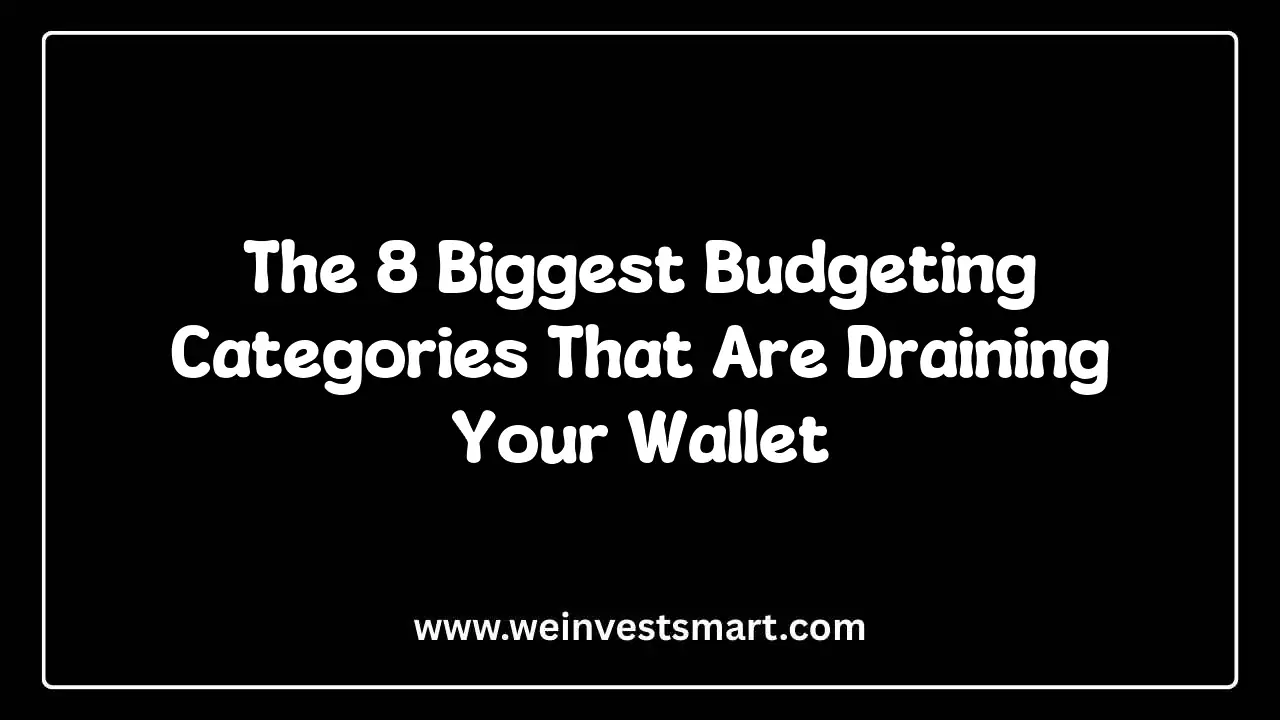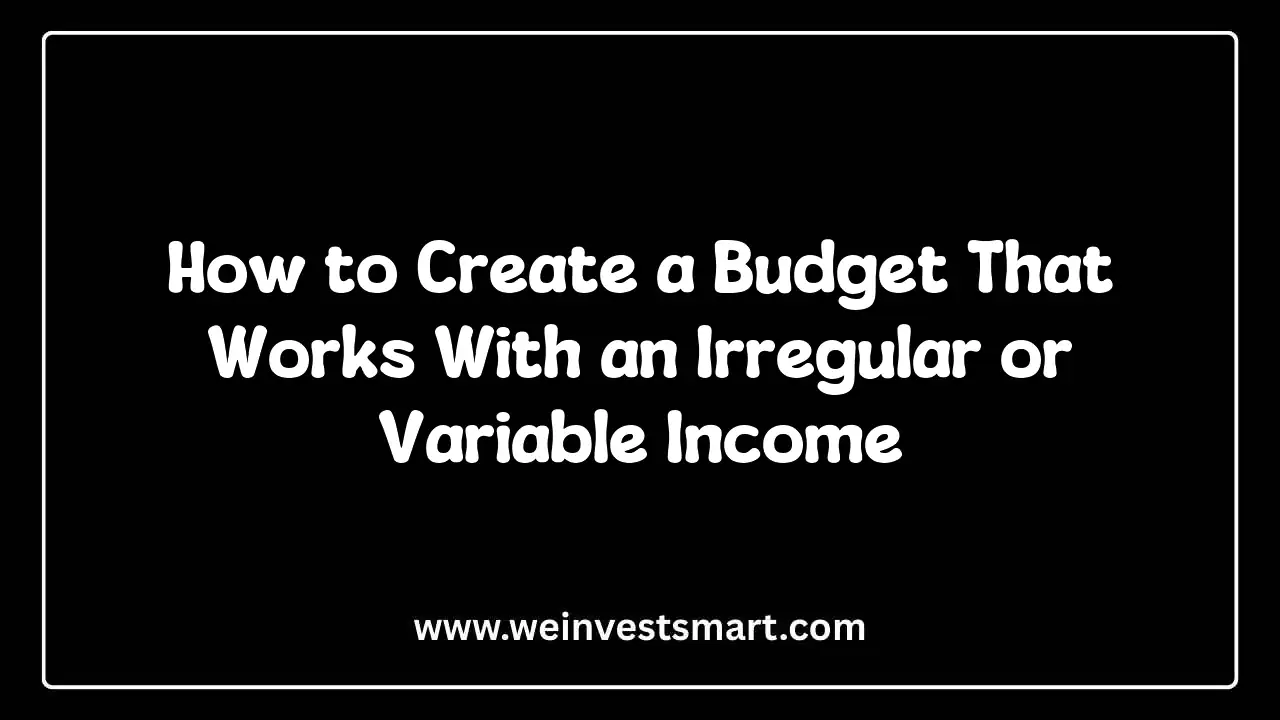· WeInvestSmart Team · budgeting · 11 min read
Beyond the 50/30/20 Rule: 4 Alternative Budgeting Methods to Try
The 50/30/20 rule is a great start, but it doesn't work for everyone. Explore four powerful alternative budgeting methods—Zero-Based, Envelope, Pay-Yourself-First, and the Anti-Budget—to find the perfect fit for your financial personality.
Most people who try to budget fail, and it’s not their fault. They’ve been handed a one-size-fits-all tool for a deeply personal problem. You’ve heard the gospel of the 50/30/20 rule: 50% for needs, 30% for wants, and 20% for savings. It sounds clean, simple, and responsible. But here’s the uncomfortable truth: for a huge number of people, it’s an absurd standard. In a world of sky-high housing costs and crushing student debt, telling someone that 50% of their income should cover “needs” can feel like a slap in the face.
Going straight to the point, forcing your financial life into three arbitrary buckets is like trying to fit a square peg in a round hole. It ignores your unique income, goals, personality, and debt load. What if your “needs” consume 65% of your income? What if your primary goal is aggressive debt repayment, not saving 20%? The funny thing is that when this rigid system inevitably breaks, we blame ourselves for a lack of discipline, not the flawed framework. We think we’re “bad with money,” when the real problem is that we’re using the wrong tool for the job.
Here’s where things get interesting. Budgeting isn’t about restriction; it’s about intention. It’s about creating a system that aligns your spending with what you truly value. The 50/30/20 rule is just one system, and it might be the very thing holding you back. And this is just a very long way of saying that it’s time to look beyond the internet’s favorite rule of thumb and find a budgeting method that actually fits your brain and your life.
Alternative #1: Zero-Based Budgeting (The Control Freak’s Dream)
Let’s start with the most intensive, but arguably most powerful, method: Zero-Based Budgeting (ZBB). The philosophy is simple and potent: your income minus your expenses must equal zero. Going straight to the point, you give every single dollar a job before the month begins. No money is left idle or unaccounted for. This isn’t about spending everything you make; it’s about assigning every dollar to a category, whether that’s rent, groceries, debt repayment, investments, or savings for a vacation.
Think of yourself as a general deploying your troops (your dollars). Each dollar is assigned a specific mission. You wouldn’t just leave a portion of your army standing around with no orders, would you? Of course not. ZBB applies this same strategic mindset to your finances. Popular apps like YNAB (You Need A Budget) are built entirely around this methodology, forcing you to consciously allocate your funds. The process forces a level of awareness that other budgets simply can’t match. You see exactly where your money is going and can make deliberate trade-offs.
But what do we do when unexpected expenses pop up? Here’s where things get interesting. With ZBB, if you overspend in one category (say, restaurants), you have to pull money from another category (like entertainment or shopping) to cover it. This creates a real-time feedback loop. You’re forced to confront the consequences of your spending decisions immediately, rather than waiting until the end of the month to see the damage. This sounds like a trade-off in flexibility, but it’s actually a powerful tool for building discipline.
- Who It’s For: ZBB is perfect for people who crave control, have a variable income, or feel like their money just vanishes into thin air each month. It’s for the person who wants to optimize every last penny.
- The Bottom Line: It’s meticulous and can be time-consuming, especially at first. But for those who stick with it, ZBB offers unparalleled clarity and control over their financial lives.
Alternative #2: The Envelope System (The Psychological Powerhouse)
If ZBB is the high-tech digital command center, the Envelope System is the old-school, analog field manual. And in a world of frictionless one-tap payments, its tactile nature is precisely why it’s so incredibly effective. The concept, popularized by financial experts like Dave Ramsey, is beautifully simple: you allocate cash for your variable spending categories—like groceries, gas, entertainment, and restaurants—into physical envelopes at the start of the month. When the money in an envelope is gone, it’s gone. You can’t spend any more in that category until the next month.
The magic of this system lies in its psychology. Swiping a plastic card is abstract and painless. Handing over the last $20 bill from your “Restaurant” envelope, however, is a tangible, slightly painful experience. You feel the money leaving. This friction forces you to be more intentional with every purchase. You’re far less likely to make an impulse buy when you can physically see your grocery budget dwindling before your eyes. It reconnects you to the reality of your spending in a way digital transactions simply can’t.
But what about today’s largely cashless world? Of course, carrying wads of cash can feel inconvenient or even unsafe. The good news is that the envelope system has evolved. Digital versions now exist through apps like Goodbudget, which allow you to create virtual “envelopes” without ever touching a dollar bill. These apps sync across devices, making it easy to track your spending in real-time, whether you’re at the grocery store or shopping online. You get the gist: the core principle of finite, categorized spending remains, just adapted for modern life.
- Who It’s For: This method is a game-changer for chronic overspenders, visual and tactile learners, and anyone trying to break the cycle of credit card debt.
- The Bottom Line: The cash version can be inconvenient, but its psychological impact is unmatched for curbing impulsive spending. The digital versions offer a great modern compromise.
Alternative #3: Pay-Yourself-First (The Automated Path to Wealth)
Most people approach saving backward. They pay their bills, cover their spending, and then try to save whatever is left over at the end of the month. The funny thing is, there’s usually nothing left. The Pay-Yourself-First method, also known as reverse budgeting, flips this entire script on its head. It’s less of a restrictive budget and more of a powerful savings strategy that works with human nature instead of against it. Going straight to the point, you prioritize your financial goals first, not last.
Here’s how it works: you decide on a specific percentage or dollar amount you want to save each month—say, 15% of your income. Then, you set up an automatic transfer to move that money from your checking account to your savings, retirement, or investment accounts the day you get paid. What’s left in your checking account is yours to spend on bills and other expenses. There’s no need to track every single coffee purchase or categorize every transaction. Your savings goals are already met, so the pressure is off.
This sounds like a trade-off between control and simplicity, but it’s actually a desirable thing. We covet this automation because it removes the two biggest obstacles to saving: willpower and memory. You’re not relying on being disciplined enough to manually save money at the end of the month; the system does it for you. This ensures you consistently build wealth over time without feeling deprived. It reframes saving as a non-negotiable expense, just like your rent or mortgage.
- Who It’s For: This is the ideal method for people who hate the idea of meticulous tracking but are serious about hitting their savings goals. It’s perfect for natural savers who just need a simple, automated system.
- The Bottom Line: It’s incredibly simple and effective for building wealth, but it requires discipline to not overspend the “leftover” money in your checking account. It works best when paired with a general awareness of your major fixed costs.
Alternative #4: The “Anti-Budget” (The High-Earner’s Secret Weapon)
Now for a method that challenges the very idea of budgeting itself. The Anti-Budget is designed for a specific group: high earners who have a significant surplus of cash each month but lack the desire for granular tracking. Traditional budgeting advice often feels like overkill for this group; they don’t need to pinch pennies, but they do need a system to ensure their substantial income is working for them and not just inflating their lifestyle. The Anti-Budget provides exactly that—a framework for intentionality without the tediousness.
The setup is a more aggressive version of the Pay-Yourself-First method. First, you automate your savings and investments at an aggressive rate (think 30-50% or more). Second, you automate all of your fixed bills—mortgage/rent, utilities, insurance, car payments, and subscriptions. After these two major automated deductions, the money that remains in your checking account is yours to spend completely guilt-free. No categories, no envelopes, no tracking. If you can afford it with the cash that’s left, you can buy it.
This method requires a high degree of upfront honesty and discipline. You have to accurately calculate your fixed costs and set an ambitious, sustainable savings rate. But even though the setup is crucial, the long-term maintenance is virtually zero. It frees up immense mental energy by eliminating the daily minutiae of financial management. And this is just a very long way of saying that the Anti-Budget allows you to enjoy the fruits of your high income without letting lifestyle creep sabotage your long-term wealth.
- Who It’s For: This is exclusively for high earners with stable incomes and a large gap between their earnings and essential expenses. It is not suitable for those living paycheck to paycheck or with high-interest debt.
- The Bottom Line: It offers the ultimate freedom and simplicity for those who can afford it, but it hinges on aggressive automation and a solid financial foundation.
How to Choose Your Financial Weapon
So, what do we do? How do you pick the right system? The best budget isn’t the one that’s mathematically perfect; it’s the one you can stick to consistently. Your financial personality is the most important factor.
- If you crave control and data: Zero-Based Budgeting is your answer. You want to know where every dollar is going and why.
- If you struggle with overspending: The Envelope System (cash or digital) provides the tangible limits you need to change your behavior.
- If you value simplicity and automation: The Pay-Yourself-First method ensures your goals are met with minimal effort.
- If you have a high income and hate tracking: The Anti-Budget gives you freedom within a disciplined, automated framework.
And here is where things get interesting: you can mix and match. You might use the Pay-Yourself-First method for your overall savings goals but implement a digital envelope system for your “guilt-free spending” money to control your food and entertainment costs. The goal is to build a personalized system that serves you, not the other way around.
Ultimately, choosing a budget is a declaration of intent. It’s the tangible proof that you are in control of your financial destiny. The 50/30/20 rule is a starting point, but it’s not the finish line. You get the gist: stop trying to force yourself into a system that doesn’t fit, and start building one that does. Your future self will thank you for it.
This article is for educational purposes only and should not be considered personalized financial advice. Consider consulting with a financial advisor for guidance specific to your situation.
Alternative Budgeting Methods FAQ
What is the best alternative to the 50/30/20 budgeting rule?
The best alternative depends on your personality and goals. Zero-Based Budgeting is great for control, the Envelope System helps curb overspending, Pay-Yourself-First simplifies saving, and the Anti-Budget offers freedom for high earners. The best budget is the one you can stick with consistently.
What is Zero-Based Budgeting?
Zero-Based Budgeting (ZBB) is a method where your income minus your expenses equals zero. Every single dollar is assigned a specific job—whether for bills, spending, saving, or debt repayment—before the month begins. This provides maximum control and awareness over your money.
How does the Pay-Yourself-First method work?
Also known as reverse budgeting, this method prioritizes your savings goals. You decide on a savings amount or percentage and automatically transfer it from your paycheck to your savings or investment accounts first. The remaining money is then available for your expenses and discretionary spending.
Is the Envelope System still effective in a digital age?
Yes, the Envelope System is highly effective. While it traditionally uses cash in physical envelopes for different spending categories, it has been adapted for the digital age. Apps like Goodbudget and YNAB allow you to create digital ‘envelopes’ to enforce spending limits without needing to carry cash.
Who should use the Anti-Budget method?
The Anti-Budget is best for high earners with a significant gap between their income and essential expenses. It involves automating savings and fixed bill payments, then spending the rest of the money freely without meticulous tracking. It offers simplicity and freedom but requires strong initial discipline.



